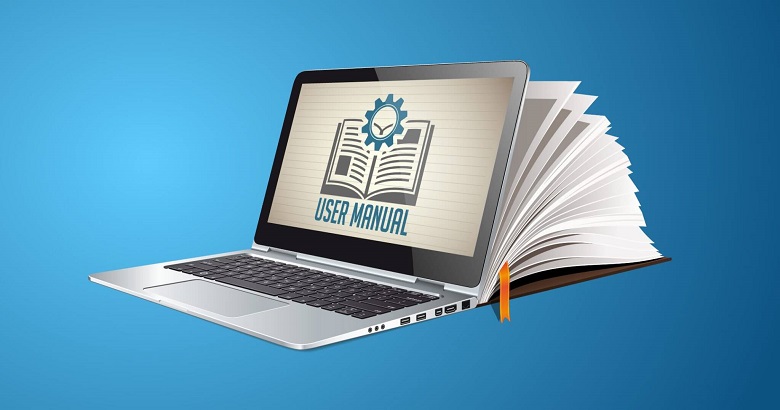As a writer, the journey from writing your manuscript to seeing your book on the shelf can appear to be a monolithic process. However, it is far more nuanced and intricate than one might quickly believe. Many aspiring authors devote endless hours to securing a book deal, often overlooking all of the steps which take place after their manuscript is sold to a publishing company. The reality is that once you sign that desired contract, a comprehensive process begins—one meant to transform your raw manuscript into a polished, market-ready book. This process is not just a formality but a crucial step that can make or break the success of your book.
The Publishing Process: What Writers Don’t Know!

Securing a book deal is undoubtedly a significant achievement. It’s the culmination of years of hard work, determination, and creativity. But what comes next is equally crucial. Your manuscript will now be in the hands of a dedicated team of professionals whose expertise is to revise and enhance your work. From meticulous editing to strategic advertising, each stage is vital to ensure that your book resonates with readers and attains commercial success.
In this blog, we’ll look at the four major stages of editing a book that your manuscript will go through, explaining what each one comprises and how it contributes to the ultimate result. Understanding these stages of editing a book not only clarifies the process but also prepares you for the collaborative effort that lies ahead. You’re not alone in this journey. Your professional editor is your partner, working with you to bring out the best in your manuscript. So, let’s go on this instructive adventure together and find out what happens after you’ve secured that lucrative book deal.
The first stages of publishing bring more edits!
You’ve undoubtedly gone through a lot of editing and rewriting, and you’ve most certainly redrafted your entire manuscript at least once. If you assumed your book was ready when your agent delivered it to editors… Good one! Now that you have a professional editor get ready for another round of edits with bells on. This is where the real transformation of your manuscript begins, and it’s an exciting part of the publishing process.
In most cases, your book will be published within a year of being acquired. This may appear to be a long period, but rest assured, you and your editor will be really busy shaping your manuscript into a masterpiece during this time. This timeline allows for thorough editing and strategic marketing, ensuring that your book is not just published but also successful in the market.
So, what should you expect from the expert editing process? It is divided into four stages, which at many publishing houses take approximately six months. (Though, of course, each novel is unique):
- Developmental Editing
- Line edits.
- Copyediting
- Proofreading.
The First Stage of Publishing: Developmental Editing
In the first step of all the stages of editing a book for the publishing process, the editorial department concentrates on improving the overall big picture of your book.
This part of the process, sometimes known as structural edits, is primarily collaborative. It is a time for you and your editor to discuss any substantial or foundational modifications that could improve your book before it is published.
Naturally, proposed changes will differ for each book.
However, most writers address broad questions at this stage of publication. In general, they all want to know if the final draft of your book fulfils its promise for readers of the genre.
- Is the opening as intriguing as possible?
- Is the ending satisfactory?
- Are there any missing or unnecessary scenes?
- Are there any plot holes to address?
- Are we interested in each character?
And so on.
During this stage of publishing, two or three ’rounds’ of structural edits are usually conducted. In other words, your editor will offer you three rounds of feedback, and you will return three updated manuscripts.
This stage of publishing can take anywhere between one and four months.
The Second Stage of Publishing: Line Editing
Once the big picture is in place, the editor will zoom in and conduct sentence-by-sentence improvements.
Are there any terms you use too often? Are there some metaphors that don’t fully work? Jokes that don’t work? Your editor will provide expert suggestions to improve each page until you are both satisfied that it is the best it can be.
Structural and line edits are not in binary. While you’re still at the structural stage of editing a book, you and your editor are likely to look at sentence-level details.
Depending on how thorough your structural edits were, you should expect one or two rounds of line editing. Usually, your editor will expect your revisions back in around a month.
The Third Stage of Publishing: Copy Editing
The third step of publishing delves further into the nitty-gritty. It mostly focuses on fact-checking and sense-checking your writing.
Remember, fact-checking is not limited to nonfiction. A professional copyeditor ensures that every component of your story, including seemingly meaningless comments, makes sense. If your characters are driving on the left side of the road in the United States, for example, or paying in Euros in Cambodia, they will recommend you revise (unless these are intended choices for your narrative!).
This stage of publishing also includes evaluation for internal consistency, such as if the name of a fairy tale village is spelt differently in one chapter than another. Your copy editor also formats the typed document and provides instructions to the typesetter.
The Fourth Stage of Publishing: Proofreading
Proofreaders, naturally, check your revised proofs. They will check for spelling and punctuation errors, including typos. At the same time, proofreaders look over any typesetting issues to ensure that the final printed edition is free of sloppy line breaks and mistakes.
Copy editing and proofreading are both intricate specialities that require a significant amount of time to complete. Most publications have freelancers or separate in-house teams who handle these finicky tasks rather than the publishing editor you’ve been working with.
If there are any queries, concerns, or requested changes, you will be consulted and granted final approval. At this point, you will go over their notes (usually by clicking ‘yes’ to their suggestions in a Microsoft Word document with the tracked changes function). Typically, authors are required to agree or reject these proposals within two to three weeks.
Now (around 3-10 drafts later), Your manuscript is ready for printing.
When Do You Get to Hold Your Book?

If you follow social media, you’ll most probably notice book bloggers waving around printed copies of a physical book months before it’s released, frequently with a wacky, eye-catching cover design or some book-related swag.
In the UK, these are known as ‘proofs’, while in the US, they are known as ARCs (advanced reader copies) or galleys. These are often printed between the copyediting and proofreading stages of publication; thus, they are not the final text. They are not for resale but are intended to generate reviews and early interest in the book.
Your book will be finished and officially printed approximately 1-2 months before publication to allow for distribution to bookstores and any early events.
Four Tips for The Editorial Stages of Publishing:
- Don’t worry if there are tons of changes! Remember that the commissioning editor acquired your book because it was already incredible and had the potential to be even better.
- This can be a moment of real doubt for a lot of writers while making edits to a book they’ve been working on for a long time, which can feel trapped. Remember that your story needs to go through a lot of skin shedding and metamorphosis before it can be its finest self.
- Avoid becoming overwhelmed if you find yourself asking ‘simple’ inquiries about the topic. It’s very natural to switch between the big picture and the little details. If you can’t see your way out of a story dilemma, remember that you now have an agent and an editor to assist you!
- Enjoy creative collaboration. Your editor will likely be the only person other than you to read your book thoroughly and several times.
The Visual Step of Publication: Book Cover
For many authors, seeing their book’s finished cover art for the first time is both exciting and worrisome.
Your editor will have briefed your designer, who may be internal or freelance. They normally convey the brief by providing some ‘comparison titles’. That simply means books aimed at a similar audience to yours.
Any publisher worth their salt requires the author’s approval before the cover is signed off. It is a conversation, not a conscription. If you have any feedback or ideas, speak with your agent first; they can assist you.
The process varies greatly, but you should anticipate seeing the first draft of your book cover a few months after your deal is signed and the final version six months before publishing (so that it may be disclosed online and in bookstores).
At the same time, keep in mind that you’re working with a professional team, and your publisher’s marketing and sales teams will have provided valuable feedback on the final design. They may have a valid reason for advising, but it seems this way. Everyone has your book’s best interests at heart.
The Final Stage of Publishing: Selling Your Book
The good news is that if you’re conventionally published, you’ll have a full team of pros trying to get your book in front of readers who will enjoy it.
Your sales, publicity, marketing, and rights teams will work behind the scenes throughout the publication process and far after the release date. You’ll start getting involved a few months before publication.
FAQ’s – Frequently Asked Questions
1. Will a publishing business edit my book for me?
Indeed, the majority of publishers provide editing services. The editors will go through developmental editing, copyediting, and proofing – the four stages of editing a book, to make sure your manuscript is flawless and prepared for publishing.
2. What is the process of book editing?
Developmental, line, copy, and proofreading editing are the stages of editing a book that a publisher usually employs. Whether it’s fixing formatting and grammar mistakes or enhancing overall structure and content, each stage focuses on something specific.
3. Within what time frame can a publisher make changes to a manuscript?
The steps you take to edit your work will depend on its length and intricacy. It could normally take a few weeks to many months. A high-quality finished work depends on each of the book editing stages.
4. Are editing services from a publishing company extra expensive?
That relies on your contract and the publishing business. While self-publishing sites may charge extra for extensive editing packages, traditional publishers frequently include the stages of editing a book in their services.
5. Can I work with an independent editor before turning in a manuscript to a publisher?
Unquestionably. Prior to turning in their work to a publishing house, many authors decide to employ independent editors to complete the stages of editing a book. This might raise acceptance chances and provide a more polished finished product.



